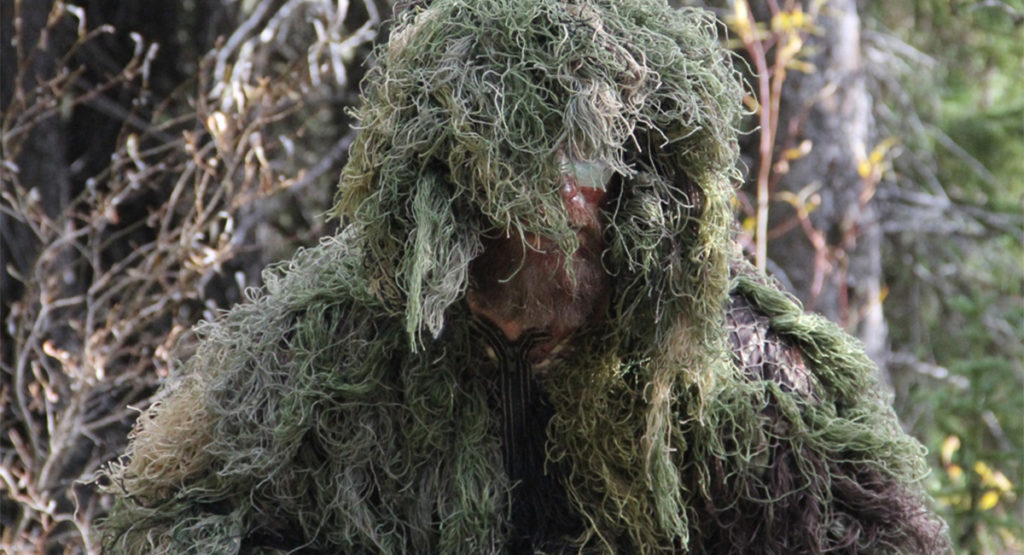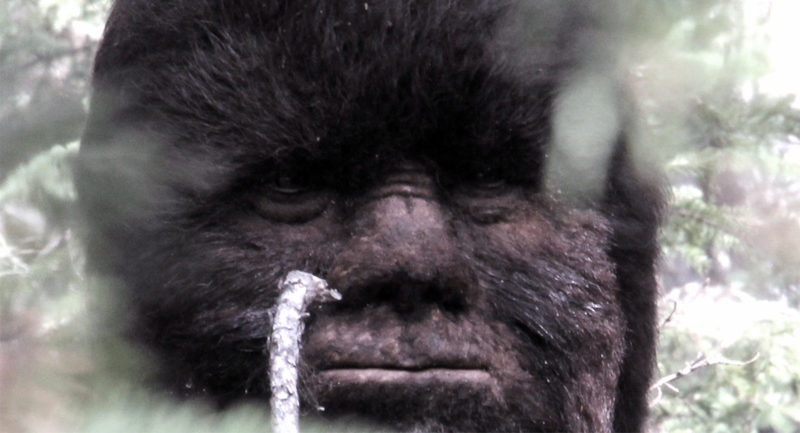There is a human side to the study and research of the elusive Sasquatch.
Beneath the Ghillie suit Todd Standing wears to blend into the environments while on investigations in Radium Hot Springs, B.C. or in Alberta and Montana, is a man who has sacrificed plenty to get the evidence needed, and the right set of eyes to see it.
He’s a father of two – son and daughter – who, every time he heads out into the wilderness to connect with the Sasquatch family he researches, he worries if he’ll make it back home to see them again.
“There are layers to this that people just don’t see,” he admits, his voice heavy with emotion. “My family knows I’m going to go sleep where there are mountain lions and grizzly bears.
“They know if there’s going to be a hit, it’s me who’s going to be taking it.”
His research has also placed him in a precarious position financially, as he has sold his home in the past to help fund his trips – which he only gets four weeks out of the year at his current job.
All of the sacrifice, both financial and familial, has been one that has led him to create the documentary, Discovering Bigfoot, which was released on Netflix. He has not received any compensation from that deal.
Regardless of whether a belief in the hominid or not, the transplanted Albertan has made it his mission to prove the existence, whether be through the courts of Canada and the United States, or by sharing his footage in his documentary Discovering Bigfoot.
The 45-year-old, who currently calls British Columbia home, has had a busy year in terms of trying to move his quest forward, to reveal the world of Sasquatch.
However, if striking up a
“I don’t use that term, cryptid. It’s just a B.S. term,” he said. “If you’re a cryptozoologist, you just say you are. There’s no degree. I do Sasquatch research.
“I’m a student of PhDs and scientists,” he added. “We do legitimate, hands-on research based on biology, primatology, anthropology.”
His interest in the much-debated hominid began while attending the University of Alberta for biology. He initially set out to prove there was no Sasquatch, but something inside of him changed.
“I was going to prove that they couldn’t exist in the ecology – that there was no ecological niche for them to survive within,” Standing recalled, adding he would eventually be sent in another direction because he captured them on film.
He’s trained in tracking by First Nations tracker, Maskwa, a.k.a Two Bears, and his mentors include survival expert Les Stroud, wildlife biologist John Bindernagel and anthropologist Jeff Meldrum.
He said he discovered a way to prove the species was real and ultimately wanted to pass along his findings to Fish and Wildlife departments, in order for them to take over the study.
“They have refused to do. That’s why it turned into a species protection movement with signatures,” Standing said. “In fact, legally, they won’t even say they exist. They’re prepared to be deceitful about this. They acknowledge it by saying nothing.”
Standing attempted to raise awareness to the species in January. He also claimed that the provincial government has committed a “dereliction of duty”. He filed a lawsuit against the Ministry of Forests, Lands, Natural Resource Operations and Rural Development.
In
“While the court is clearly without jurisdiction to embark upon an independent investigation of scientific matters, the court is also without jurisdiction to order the government of British Columbia to expend funds to conduct particular scientific investigations of the flora and fauna of the Province,” the decision read.

While on investigations in British Columbia and Alberta, Standing will don a Ghillie suit to blend in with the environment.
Additionally, Standing’s rights were not violated, the judged decided, and in that conclusion, Standing was forced to pay back the province’s legal costs.
David Karn, a spokesperson with British Columbia’s Ministry of Environment and Climate Change Strategy, provided a statement to the Superstitious Times regarding Standing’s ongoing pursuit.
“We are confident in the court’s application of its power to strike out claims that have no reasonable prospect of success as an essential tool to promote efficiency and fairness in litigation,” he said in an email.
It’s an ongoing challenge for Standing to prove his point and share his evidence with the rest of the world, not only through means of documentarian work but through government collaboration.
The issue, perhaps part of the cultural fabric, is the ridicule witnesses’ face when trying to share their stories – to affix their names to the testimonies.
“Three women in a car saw a Sasquatch – one that I filmed in Radium – he put his hand on the hood of the car,” Standing said. “One of them is a nurse, the other a massage therapist. They’re well respected women in their community and they were told they were hallucinating.
“They saw him vividly. Nobody believes them. There was no newspaper article. Nobody cares. But they saw it.”
Even their own husbands and members of the community didn’t believe them.
With every failure, however, it’s tough to keep grinding it out. Repeated trips into the cold, unforgiving climate the Sasquatch call home, has shortened Standing’s lifespan.
“There have been days where I laid down to die, and something inside me stirs, pushing me forward, ‘You can do this’,” he said. “I’ve permanently damaged my lungs by running in -40, -50 degree weather. You hear me coughing and making weird noises because I’ve slept out in the cold weather.”
But it is worth it.
“I love my life. I want to live long enough to see my grandchildren. I love this planet. I love being a human being, and these are just the sacrifices I’ve made,” Standing said.

